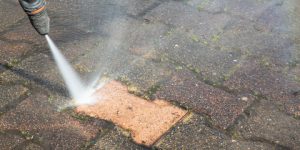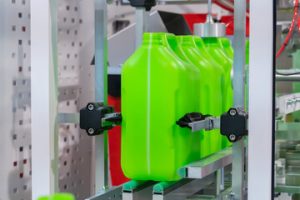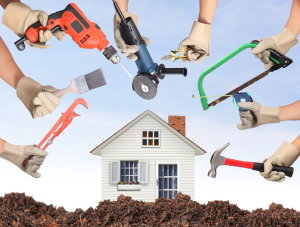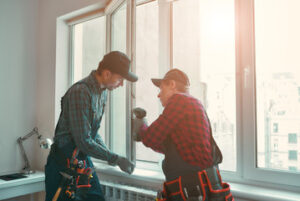Pressure washing is an effective cleaning method for a wide variety of surfaces and can be used to remove dirt, mold, mildew, and other contaminants. It is also an efficient way to clean vehicles and equipment.

When choosing a pressure washing service, look for one that uses environmentally-friendly detergents and practices water conservation techniques. A professional will know the proper pressure settings for different surfaces and stains to avoid damaging them. Contact Mcmillians Pressure Washing Services for professional guidance.
Pressure washing is a great way to enhance your property’s curb appeal, which can increase its value on the real estate market. It removes unsightly stains and dirt buildup from the surfaces of your home’s exterior, making it look fresh and clean. In addition, regular pressure washing services will help extend the life of your siding, deck, driveway, and other outdoor features. This can save you money on expensive repairs and replacements in the future.
Potential buyers will notice the clean and well-maintained appearance of your house’s exterior and can be more willing to pay a higher price for it. Dirty and stained houses are a major turnoff for most people, especially those who are looking to move into a new home. By hiring professional power washing services, you can ensure that your home looks its best and attracts more potential buyers.
In addition to increasing your property’s value, pressure washing also provides a number of other benefits for your home and family. It helps to improve your health by removing harmful contaminants from your property’s surfaces, such as mold, mildew, and other allergens. This can help to alleviate some of the symptoms caused by these substances, such as itchy eyes and runny noses.
It can also be used to remove unsightly biological growths on your home’s exterior such as algae and moss. These can damage your home’s siding and create a dingy, unappetizing appearance. By using pressure washing, you can safely remove these growths without damaging your home’s exterior.
Unlike traditional cleaning methods, which can be time-consuming and labor-intensive, pressure washing is fast and easy. It is also effective on a wide range of surface types, including wood, vinyl, concrete, and asphalt. However, it is important to use the right pressure settings and nozzles to avoid causing damage to these surfaces.
Remove Mold and Debris
Dirty surfaces can cause a variety of issues for homeowners. Mold, mildew, and algae can discolor and damage siding, driveways, sidewalks, decks, and patios. Left unattended, these elements can lead to costly repairs and replacements. Pressure washing removes these unsightly stains and prevents future growth, extending the life of your exterior surfaces.
If you’re planning on selling your home, a dirty exterior can put potential buyers off. They may assume that your home is in poor condition and not worth much money. Fortunately, pressure washing can boost your curb appeal and make your home look brand new.
Power washing also eliminates the need to scrub and manually clean exterior surfaces, which can damage them if done improperly. A professional will adjust the water pressure and temperature for each surface to avoid damaging your surfaces. They’ll also use biodegradable detergents that are safe for the environment and your family.
Leaving mold to grow on your home can cause severe structural damage and deteriorate its appearance. Additionally, it can emit a foul odor and trigger allergy-like symptoms in people and pets. Pressure washing is the best way to evict mold from your home’s exterior without using harsh chemicals or sacrificing its integrity.
Cleaning outdoor surfaces regularly with a pressure washer can keep them safer for children and pets. Algae and mildew can create slippery surfaces, increasing the risk of falls and injuries. Likewise, cobwebs near windows and other high spots can be a tripping hazard. Pressure washing these areas removes the buildup and makes them safer to walk on.
Before the cleaning begins, professionals will apply a mold-removal solution to the targeted surface. The solution will break down mold cells and make them easier to wash away with a higher pressure setting. Next, they’ll choose the right nozzle and attachment to complete the job. A wide-angle nozzle is ideal for general cleaning, while a turbo or spinning nozzle can target and dislodge stubborn mold spots. Professionals also take care to protect plants, electrical outlets, and other items on or around the property during the cleaning process.
Reduce Water Waste
Unlike traditional cleaning methods like scrubbing or simply hosing surfaces down, pressure washing uses an intense stream of water to remove dirt, mildew, mold, and other debris from various surfaces. This type of surface cleaning eliminates the need for chemical products that may harm natural or artificial materials.
Using this method to clean a property’s exterior surfaces also protects the environment by preventing pollution from runoff. Professional pressure washing services use wastewater recovery systems to reroute or recycle used water, keeping it from polluting storm drains and local waterways. These systems are a necessity for commercial spaces like parking lots and garages, where spills and chemicals can seep into the surrounding environment.
The reusable or recyclable wastewater is filtered before being reused to prevent contaminants from entering the ecosystem. This commitment to sustainability ensures that pressure washing doesn’t have a negative impact on the environment, while also helping businesses comply with environmental regulations.
Regular pressure washing helps reduce allergens that can impact indoor and outdoor air quality, including mold, mildew, dust, loose paint, chewing gum, and other debris. This type of surface cleaning also extends the lifespan of exterior materials by removing harmful elements that cause premature wear and tear, as well as preserving the structural integrity of buildings and other structures.
Although a powerful tool, pressure washing can be dangerous when used indiscriminately. Professionals use high-tech equipment that allows them to control the amount of water used based on specific cleaning needs, limiting usage to areas that need it. This reduces wasteful consumption and unnecessary resource depletion, benefiting the environment as well as the homeowner’s budget.
In addition, a professional cleaning service typically uses biodegradable detergents to minimize the effects on the environment. These detergents are formulated with environmentally friendly ingredients, ensuring that any pollutants that might be released during the cleaning process don’t harm the surrounding ecosystem. The cleaning solutions are also made to be safe for pets and children, minimizing the risk of exposure to harsh chemicals. Regular cleaning also helps reduce the need for more intensive repair or replacement services, further reducing environmental impact.
Save Money
For homeowners, regularly cleaning surfaces with a pressure washer can be a smart financial investment. This preventative maintenance can save you money in the long run by reducing the need for costly repairs and replacements. Mold, mildew, dirt, bird droppings, and other contaminants can damage siding, decks, paint, and stucco if left unattended. Pressure washing removes these contaminants before they cause permanent damage, and can extend the life of exterior surfaces.
Hiring a professional to pressure wash your home can also save you time and hassle. They bring their own equipment, eliminating the need to rent or transport a washer, and have the training and expertise to handle powerful equipment safely. Additionally, they can address any specific cleaning needs you may have, such as removing oil or grease stains from concrete or scrubbing away stubborn dirt and grime.
Commercial properties can also benefit from regular pressure washing services. This preventative maintenance can improve the appearance of your building and enhance its resale value. It can also reduce health risks, such as respiratory issues caused by accumulated debris and dirt.
Additionally, pressure washing can reduce safety hazards for employees and customers. Dirty walkways, moss-covered roofs, and algae-infested decks can all lead to slip and fall accidents. Pressure washing removes these hazards before they cause injuries, and can make your property safer for everyone.
Pressure washing can also help you save on energy costs. Overtime, exterior surfaces can accumulate dirt, dust, and pollen, which blocks natural light and heat from entering your home. Pressure washing can eliminate this buildup and allow sunlight to shine through your windows, enhancing energy efficiency.








